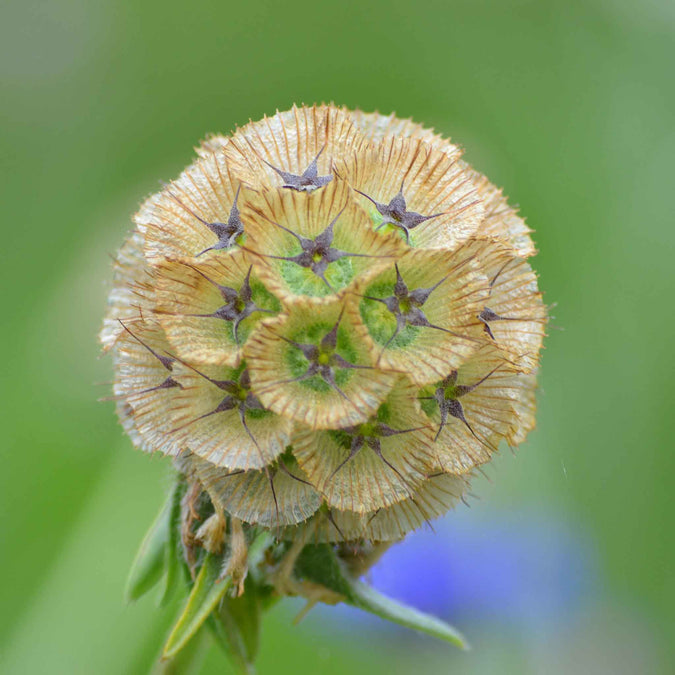
Dharaseeds
Starflower Seeds
Estimated Free Delivery between April 16 and April 19.
Secured Payment Methods
Your transaction is protected with advanced security measures to keep your information confidential
Starflower Seeds
Starflower seeds, known for producing charming, delicate blooms, are a gardener's dream for creating a vibrant, pollinator-friendly garden. These seeds grow into low-maintenance, versatile plants with star-shaped flowers that are perfect for borders, containers, or naturalized meadow gardens. With their vibrant colors and nectar-rich blossoms, starflowers attract bees, butterflies, and other beneficial pollinators, making them a fantastic addition to any garden ecosystem.
Key Benefits
- Pollinator Friendly: The nectar-rich flowers are highly attractive to bees, butterflies, and hummingbirds.
- Drought Tolerant: Once established, starflowers require minimal watering, making them ideal for eco-conscious gardeners.
- Compact Growth: Perfect for small garden spaces, borders, or container gardening.
- Extended Blooming Season: Offers long-lasting color from spring through early autumn.
- Low Maintenance: Hardy plants that thrive with minimal care.
Variety Features
- Plant Characteristics: Produces elegant, star-shaped flowers in shades of blue, white, pink, or purple, supported by thin green stems and feathery foliage.
- Growth Habit: Forms compact mounds of foliage, typically growing 6–12 inches tall, depending on the variety.
- Flowering Period: Blooms continuously from spring to fall, adding a bright, cheerful touch to gardens.
- Climate Range: Thrives in USDA zones 4–10, making it a versatile choice for most climates.
Planting Instructions
Planting Season
- Best Time: Sow seeds in early spring after the danger of frost has passed. Alternatively, start indoors 6–8 weeks before the last frost for an earlier bloom.
Planting Details
- Seed Depth: Sow seeds 1/4 inch deep in loose, well-draining soil.
- Spacing: Space seeds or seedlings 6–8 inches apart to allow proper airflow and growth.
- Soil Requirements: Prefers light, sandy soil with a slightly acidic to neutral pH (6.0–7.0).
- Sunlight: Requires full sun for optimal flowering but can tolerate partial shade in hotter climates.
Care Instructions
Watering
- Water regularly during the germination period, ensuring the soil stays evenly moist. Once established, reduce watering to once a week or as needed.
Fertilization
- Apply a balanced, slow-release fertilizer once during planting and again midway through the growing season to support healthy blooms.
Pruning and Deadheading
- Deadhead spent flowers regularly to encourage continuous blooming and maintain a tidy appearance.
Pest and Disease Control
- Pests: Starflowers are generally pest-resistant but may occasionally attract aphids. Use neem oil or insecticidal soap if needed.
- Diseases: Ensure proper spacing and avoid overwatering to prevent issues like root rot or powdery mildew.
Harvesting Seeds
- Maturity: Allow flowers to dry on the plant, and collect seeds once the seed heads turn brown.
- Storage: Store harvested seeds in a cool, dry place in an airtight container for use in the next growing season.
Garden Uses
- Borders and Edges: Ideal for creating colorful, low-maintenance borders.
- Wildlife Gardens: Attracts beneficial pollinators, adding biodiversity to your garden.
- Container Gardening: Thrives in pots and planters for patios, balconies, and small spaces.
- Meadow Gardens: Perfect for naturalizing in wildflower gardens or mixed perennial beds.
Conclusion
Starflower seeds are a fantastic choice for gardeners seeking low-maintenance beauty and pollinator-friendly blooms. With their extended flowering season, resilience, and adaptability, they are sure to enhance your garden with minimal effort. Whether planted in containers, borders, or wildflower patches, starflowers bring charm, color, and ecological benefits to any outdoor space.









